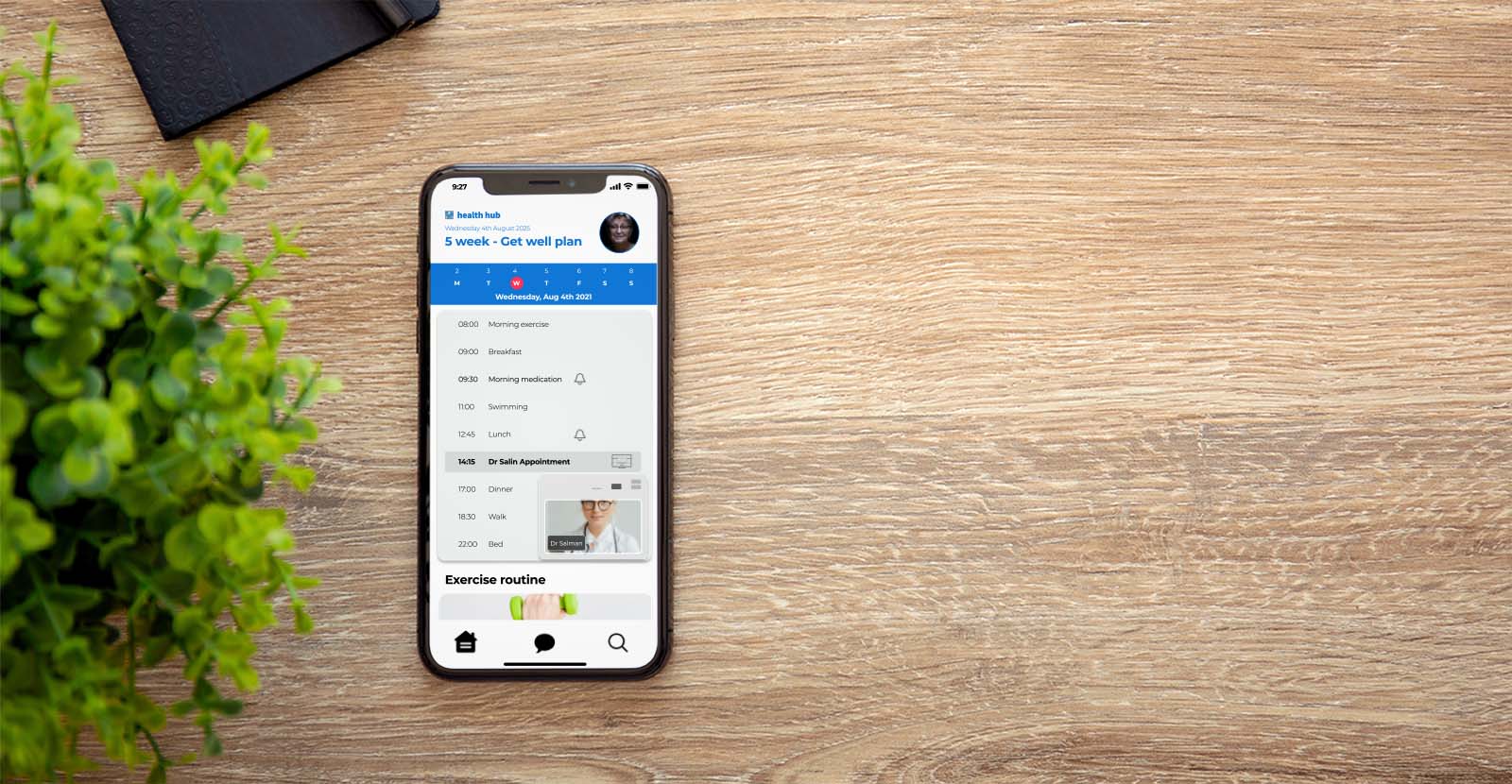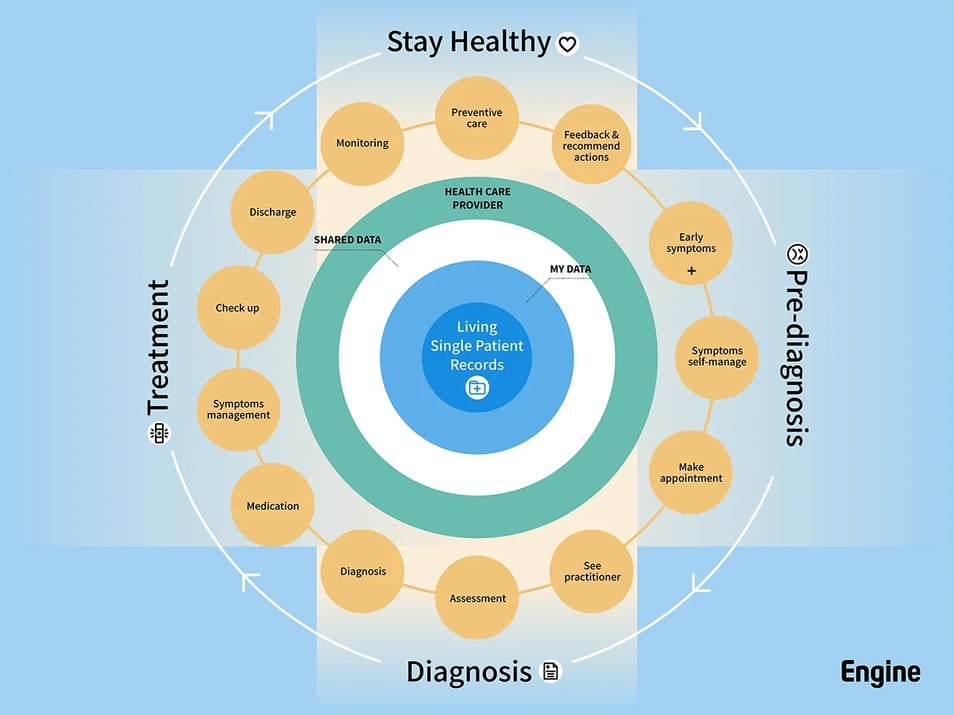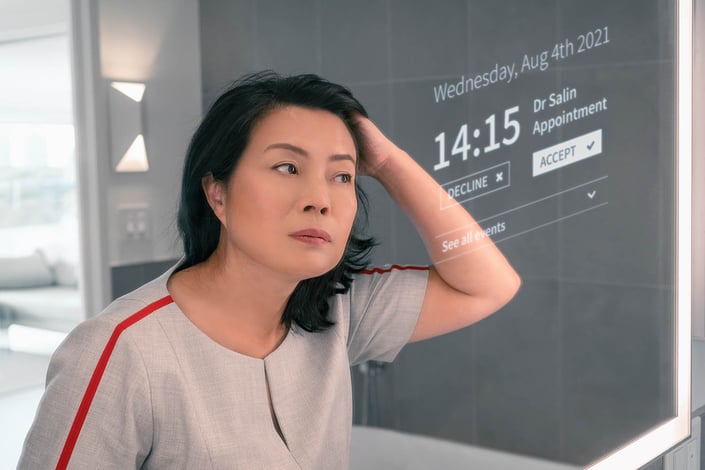Get in touch
The patient experience reimagined: Treatment

Imagine the improved quality of life, with the cohesive integration of key stakeholders working together in sync and an integrated system that works seamlessly between patients, doctors, pharmacies, insurances, and institutions.
Utilising elements of our Service Design System and input from stakeholders within the health sector, we’ve begun to reimagine what the patient experience of the future might look like, broken down into 5 key elements. This is the final part in a 5-part series, you can click here to go back and start reading from part 1.
We believe that with advances in technology and the availability of data, the treatment of illnesses, medication, and symptoms management as we know it today will change.
The Patient Lifecycle Reimagined

Join the conversation on the 20th October, as we explore the future of healthcare and a data enabled patient experience, built around a single patient record. Click here to reserve your place for the online event or click here to attend the in-person event.
.jpg?width=705&height=470&name=Blog%205%20-%2001%20(1).jpg)
- Get well plans are created for patients to conduct rehabilitation or manage chronic conditions at home.
- Get well plans provide daily schedules and routines specific tailored to the patient and that bring together treatment, advice and exercise plans.
- Remote appointments and check-ins with the healthcare professionals can happen be accessed from within the plan at scheduled times.
- Information can be embedded into the plans to support patients throughout their plan.
A cohesive get-well plan
We imagine a cohesive get-well plan, intuitive and at the palm of the patient's hand. This would revolve around a fully integrated system that could manage doctor prescriptions automatically, logistically bringing the drugs to your doorstep, or any collection point of your choice.
Mobile enabled treatment plan
We imagine reminders in patient’s devices to help them keep track of the medication intake and doctor check-ups, and continuous tracking of patient’s recovery, plus red flags if any warning signs emerge. The days of walking around with a paper prescription or forgetting about taking pills may soon be a thing of the past.

- Smart features within our homes will support to monitor our health and wellness and provide feedback to us based on patients healthcare record.
An ageing population
With an ageing population and an increase in chronic conditions, this system could play an even more important role. With the ability to track medication and monitor treatment or recovery progress, patients could be empowered to know exactly how, when and what to do to keep their condition at bay and improve their quality of life.
However, achieving this requires the cohesive integration of key stakeholders, working together in sync, underpinned by an integrated system that works seamlessly between patients, doctors, pharmacies, insurances, and institutions.
Although challenging to fully realise, the benefits for patients could be significant. Recovery processes at home could become more common and have a huge impact on a patient’s speed of recovery and their overall wellbeing.
One challenge might be to design sentient spaces at home that inconspicuously monitor patients and do not interfere with the day-to-day life of the house and its occupants.
As the Engine Service Design team have explored this future scenario further, some key experience design questions have arisen:
What is the get-well plan experience? And how do patients and other stakeholders interact with it?
- Which stakeholders will work in synchrony with the system?
- How will these stakeholders interact with the system?
- What would the home recovery process / experience look like?
- How would we design humane interactions with sentient spaces?
This brings us to the end of the Healthcare Think and Make series, but the conversation doesn't end here. We believe that with collaboration from the right stakeholders, this scenario would have extensive benefits to patient wellbeing, health, and the overall patient treatment experience.
Join us and have the opportunity to influence this discussion and get answers to these questions and more, with our expert panel, including David Hadley from Mediclinic and Dean Pollard from Bupa. This British Business Group event, sponsored by Engine Service Design, can be attended either live and in person if you are in Dubai, or virtually if you are anywhere else in the world.
The patient experience reimagined: Diagnosis
Is it time to move away from the rushed, human doctor diagnosis to a data and tech supported...The patient experience reimagined: Staying healthy
We shouldn’t have to lose loved ones or suffer pain that could have been avoided. As a society, we...What are fully connected services and why are they valuable?
A fully connected service prioritises customer experience by consistently and seamlessly...Book time with a service design expert.
Discover the transformative power of service design and unlock the full potential of your business. Get in touch with our service design experts today and start improving or innovating your services and customer experience.
